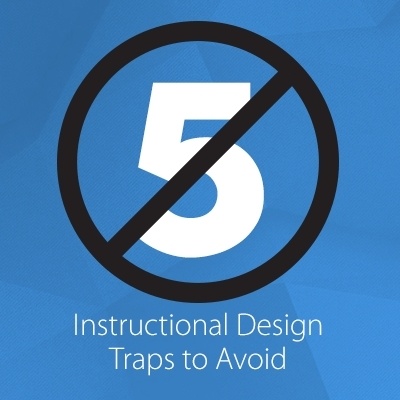Instructional Design Sketching: Sketch Your Way To Better Instructional Design
No one has ever handed me a marker and said “Can you draw that for us?” Please believe me when I say that I have no artistic ability. I can’t even run an Etch-a-Sketch and the less said about my Play-Doh bunnies the better. So, being a logical person, you may wonder why I am the one to write an article about Instructional Design sketching. And, my response would be: Because if I can do it, anyone can.
Even though I do all my own sketches on white boards and cocktail napkins, I have no idea how to sketch digitally. So, I’ve asked one of our wonderfully-talented Media Artists to help me so I can bring these ideas to you: Meet TJ Barber.

TJ has created all the sketches in this article, and helped me to articulate the power of sketching in the Instructional Design process. I have the privilege of collaborating with TJ on almost every project we do, and I would be lost without him!
Instructional Design Sketching And The Power Of Visuals In eLearning
So, let’s talk about sketching. We have to remember that eLearning is a visual medium. The layout, images, and colors on the screen all matter, sometimes even more than the words themselves. What I’ve found is that if I can sketch what I want the screen to look like and how I want the screen elements to interact, the rest of my Instructional Design tasks become so much easier.
It all starts with identifying target behaviors. What behaviors do we want learners to master? Here’s an example: Let’s say I want learners to be able to answer questions from customers about a particular product. For fun, we can pretend that my company is trying to sell the world’s best mousetrap and sales people need to have a 30-second elevator pitch about the mousetrap. So the behavioral objective is: Deliver a 30-second elevator pitch to present the World’s Best Mousetrap (patent pending).
In the interaction, I want learners to be looking at a few other people and recognize this as a wonderful opportunity to talk about their mouse trap. The challenge is that they have to structure their mouse-trap message before they can deliver it. So, they will be offered a list of phrases. They have to choose the correct phrases in the correct order to construct their elevator pitch. Feedback comes in the form of the listeners’ reactions. Faces should look either happy, confused, or mad. When the message is constructed correctly, all the listeners look happy.
Here’s what the sketch of that interaction could look like:

With this sketch, I have an interaction that I believe will achieve my behavioral objective. But, the beauty of sketching is I have even more benefits. This sketch also tells me what I need to write and how my content grids should be structured. Based on the sketch, I know I need to write:
- An introduction to set the context.
- Phrases learners can use to construct the message.
- Directions for feedback via facial expressions based on choices.
- Verbal feedback based on choices.
- Summary text with directions to download one’s newly-created elevator speech for future use.
All this from a simple sketch!
Instructional Design Sketching Benefit #1
You get a structure for writing your content grids, and you also identify the content you need. In order to use sketching effectively, you have to start with an objective that’s observable. Here’s what’s true: If the skills and behaviors you want your learners to master are observable, they are also sketch-able. The reverse is also true: If you can’t sketch it, it probably isn’t an observable behavior and you need to keep digging until you find one.
Instructional Design Sketching Benefit #2
Sketching is a great way to check to see if you have identified observable behaviors. (Hint: if your objective starts with “Understand…” it’s neither observable nor sketch-able.)

There may be other job functions in your organization related to developing eLearning: Media Artists, Developers, Project Managers, etc. Sketching forces Instructional Designers to answer questions that are important to those other people on the team. One question could be:
- What does the navigation look like? How do learners get from one part of an interaction to the next?
Now, my sketch evolves in response to that question. I have to think through what might happen, for example, if learners wanted to change the structure of their elevator speech, so I have to add navigation elements to allow them the freedom to make changes to their responses to see if they can improve their results.
 Another question that may arise is:
Another question that may arise is:
- What does the setting look like? What does the learner see, hear, and feel when performing the behavior in the real world?
And, again my sketch evolves. This time to show more about the context.

Instructional Design Sketching Benefit #3
Once you’ve identified navigational and media elements, you can communicate and collaborate with other team members about what you want the interaction to do and how it should be built. They can offer feedback and ask questions that take you into further iterations and refinements of the interaction.
Instructional Design Sketching Benefit #4
Finally, sketching is easy and costs nothing but your time. All you need is something to sketch on and something to sketch with: Whiteboard and marker, paper and pencil, tablecloth and washable marker, stick and dirt, etc. It really doesn’t matter what you use since the sketch is only a means to an end and not the final goal itself. The more “disposable” the medium you use, the more easily you can use your sketches to collaborate and iterate.
So, in the end, maybe that’s why I love sketching so much. My sketches are terrible, yes, but that’s sort of the point. Their misshapen lumps and crooked lines remind me that they’re disposable; not meant to be works of art, but works in progress. Each one is another step on the path to a successful design. And, if I do need to make anything beautiful… well, I always have TJ.
Want to learn more about the benefits of Instructional Design sketching and try it for yourself? Grab a seat at the upcoming Allen Experience for a “Performance-Driven Day of Design” in Chicago on Tuesday, September 20th co-located with Training magazine’s Online Learning Conference. I will be doing three breakouts throughout the day on “Collaborative Sketching.” I’d love to have you join the fun! Get more information about The Allen Experience and register here: http://www.alleninteractions.com/experience









